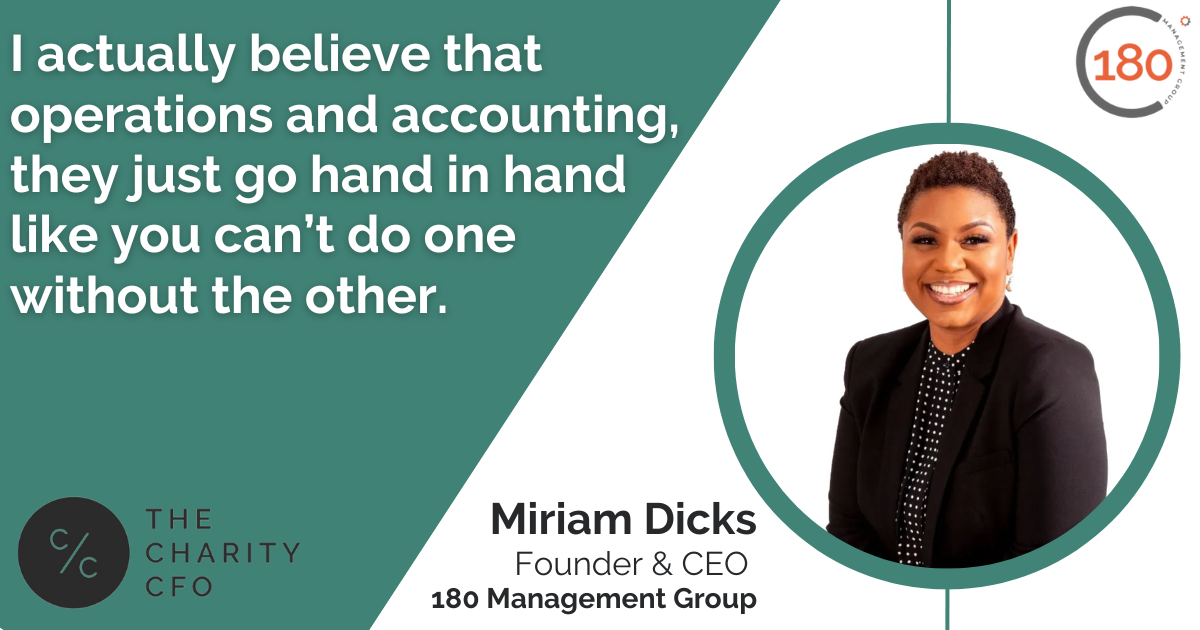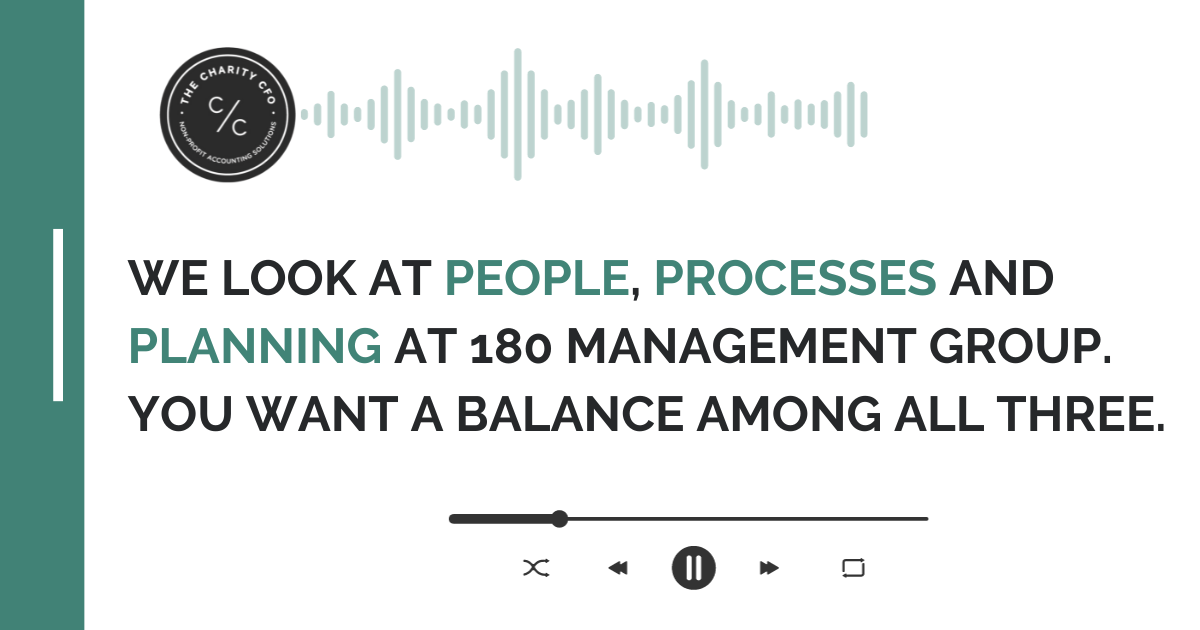180 Management Group is an operations consulting firm that specializes in operational strategy and design, specifically for nonprofit organizations. Led by Miriam Dicks and our guest on today’s show, 180 Management Group believes that people are their biggest asset.
After all, typically the highest expense on an income statement is the salary and benefits component, so employees are certainly the key to an organization’s success.
180 MG believes that how they serve their people ultimately translates into how well the employees serve the company. This creates a culture built on a solid foundation for prioritizing, serving, creating sustainability & growth for both the employees and clients.. They also happen to be the company values as well.
You can jump right into the episode on Spotify here or Youtube here!
On the Inside Looking Out
Jumping right into the conversation, Tosha brings a highly valued question to the table. How does one help clients understand their benchmarking?
Traditionally, the experience goes as such. An organization is comparable to another within the same industry, and therefore they use each other to gauge success when it comes to meeting KPI goals and industry benchmarks.
But to Tosha’s question, how from an operational perspective does one help the organization understand that their goals may need to be more specific to what’s happening within the business primarily, before comparing to others on the outside?
Essentially, how can business obtain an inside looking out perspective over the traditional mindset of looking outside-in?
Well, thankfully we have Mirim on the podcast today as she specializes in this work daily. Miriam shares how each group, organization, entity, corporation, etc are all different. And because of those differences, it is important to consider them when creating benchmarks and KPIs required for each group. Thus, causing an inside looking out approach to be utilized.
For example, the government is different from state to state, county to county. When it comes to the specific markets of a nonprofit organization, comparisons may look like an apples to apples scenario on the outside, when in reality the rules of the game that each nonprofit must follow are vastly different.
All in all, making this a consideration with plenty of weight when thinking through how each nonprofit measures up against another like it.
Speaking of apples to apples, Miriam’s approach involves understanding the core or main focus of an organization and comparing similarities here.
Two nonprofits may both be in the business of serving foster children. At the core, they have an extremely similar mission. However, if one is in Texas and another in Maine, the local and state governments will have a large impact on how each entity approaches its business model.
Connecting Vision
The conversation segways into the ongoing and pressing topic of staffing. Finding the right people to work can help an organization grow, however on the flip side not having enough staff can actually mitigate and stunt a group’s growth as well.
Miriam focuses on the aspect of connecting vision to the staff planning and staffing models within a business. Once again Miriam brings a powerful perspective to these everyday issues, especially in the accounting world, because she is willing to look into the root cause of the problem.
We learn that the hiring process takes place because there is obviously not enough staff to complete the jobs available. What should be considered more often is why these roles are available.
Through organic growth, many employees adapt their previous roles into a melting pot of new ones and in essence, what started as one job and one role can turn into one job with many different roles.
Miriam shares there are typically 3-4 reasons that vacancies exist within an organization:
- Retirement
- Staff turnover
- Losing to better offers
Outside of retirement, #2 & #3 can help reveal an organization’s culture. Does turnover exist because of a negative culture? If a characteristic like this isn’t addressed appropriately, and business backfills the role without looking deep enough, they may find themselves in a catch 22 of hiring, quitting/firing, and re-hiring once more.
The more in the weeds that a consultant like Miriam gets, the closer she gets to solving the problem.
She shares how Mergers & Acquisitions in pervious healthcare role taught her about operational due diligence. Before a healthcare entity was willing to merge/acquire a new entity, they would complete operational due diligence to understand:
- How does the organization function?
- Look deeply into the policies and procedures
- Look at best practices & understand where they were as a smaller entity
- Understand what kind of culture exists
By addressing these areas, they could make better judgment on whether the newly acquired group would fit in with the already developed culture.
She also learned from this experience how to look at organizations operational functions and how this impacts the organization’s culture. 180 MG looks at people, processes, and planning to identify a balance between the three of them.
When one or more of these areas are neglected, then Miriam and her team will help identify which area, and determine where the imbalance exists. Finally, a plan is developed that makes sense for their people, which in turn makes sense for the business.
People in the right positions produce quality and effective outcomes.
Clearly, Miriam and her team are knowledgeable in what they do. As a boutique operations consulting firm they specialize in nonprofit organizations. As a bonus, they also offer leadership development and coaching for their clients.. This addresses both operational issues and assists with the restructuring to create culture transformation. As she mentions, if leaders aren’t built alongside with building all the processes, then we find that we could build something that someone can’t manage.’
Locate Miriam on LinkedIn and 180 Management Group on the site as well.
For direct contact regarding their consultative services, visit 180managementgroup.com. Between the two, you can also find all of the resources, podcasts, and conversations Miriam and her team have.
You can find Tosha and the Charity CFO team on Youtube or our website, thecharitycfo.com!

Do You Struggle to Make Sense of Your Financial Statements?
Get our FREE GUIDE to nonprofit financial reports, featuring illustrations, annotations, and insights to help you better understand your organization's finances.
Get the free guide!



0 Comments